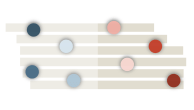
Race and LGBTQ Issues in K-12 Schools
We asked public K-12 teachers, teens and U.S. adults how they see topics related to race and LGBTQ issues playing out in the classroom.
We asked public K-12 teachers, teens and U.S. adults how they see topics related to race and LGBTQ issues playing out in the classroom.
College enrollment among young Americans has been declining over the past decade, and it's mostly due to fewer young men pursuing degrees.
Women now make up 35% of workers in the United States’ 10 highest-paying occupations – up from 13% in 1980.
Most Americans who have heard about the law say it’s had a positive impact on gender equality in the United States (63%).
Pew Research Center’s political typology sorts Americans into cohesive, like-minded groups based on their values, beliefs, and views about politics and the political system. Use this tool to compare the groups on some key topics and their demographics.
The growing gender gap in higher education – in enrollment and graduation rates – has been a topic of conversation and debate in recent months.
The gender wage gap narrows as women move into high-skill jobs and acquire more education. Women are now in the majority in jobs that draw most heavily on either social or fundamental skills.
The 30-year low reflects in part tight labor markets and falling unemployment, but also higher shares of young women at work or in school.
This year will likely be the first year in which women are a majority of the U.S. college-educated labor force.
Muslim societies have gained a reputation in recent decades for failing to adequately educate women. But a new analysis of Pew Research Center data on educational attainment and religion suggests that economics, not religion, is the key factor limiting the education of Muslim women.








